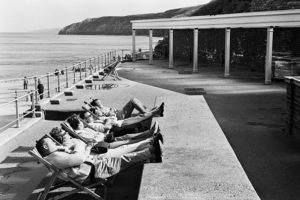In my post of 11th February I wanted to provide a context for my Take a Seat pictures by looking at how the subject was treated in western painting. I have now tried to broaden the context by looking at how photography deals with the same subject through consideration of 425 photographs from seven published sources.
Portraits and otherwise posed pictures of individuals are the largest single category and appear to represent a greater proportion than in painting. Leaving these aside, the broad categories that emerge are consistent overall with those found in painting. The eight subjects most favoured by photographers are in order: individuals resting, relaxing, thinking or sleeping; groups of two or more people interacting (including a subset of romantic exchanges); individuals driving or riding; individuals or groups eating and drinking; static group portraits; people contemplating a view or work of art; figures nursing or caring for a child; and people reading.
With a few 19th century exceptions, photography ignores religious, historical and academic subjects and is concerned with what is happening in front of the camera now. It is the logical development of earlier genre painting and proceeds in parallel for a while with the work of those artist who were painting modern life.
Within the shared categories there are qualitative differences. Overall the photographed subjects are seen as more dynamic, more natural and spontaneous than in paining, as would be expected from the nature of the two media. Maternity or nursing figures still occour, but much less frequently and when they do they are secular, not religious. ‘Riders’ are if anything more common in painting, but they are much more likely to be in a motor vehicle or on public transport than on a horse. Within the resting category people are more likely to be seen fully asleep.
One thing that anthologies and histories of photography do not yet show are figures fixated on their laptops and mobile phones. It’s only a matter of time…




